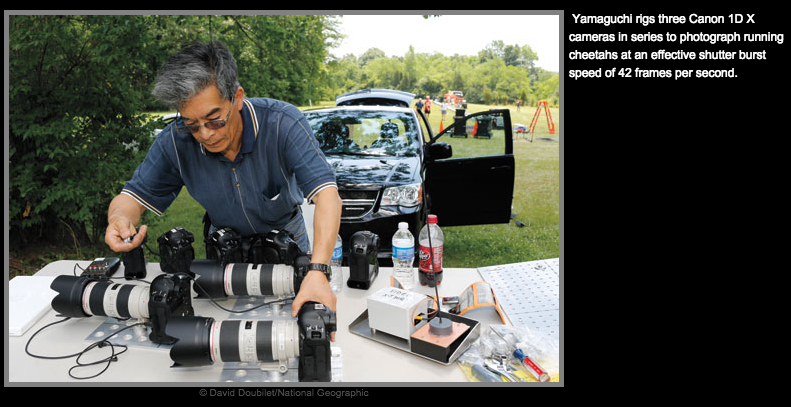Photographic Macgyvers: Nat Geo’s Photo Engineers
Photographic Macgyvers: Nat Geo's Photo Engineers
Here at PhotoWings, we are always amazed at the ingenuity and intelligence photographers bring to their craft. Whether it's Henri-Cartier Bresson meditatively waiting for his decisive moment, the quick thinking conflict journalism of Robert Capa, or Ansel Adams innovating in the darkroom to create mind-blowing prints, photographers utilize a wide variety of skills to be successful at their work.
Case in point: a recent Photo District News piece about National Geographic's Photo Engineering Department. In the article, which is worth reading in full, underwater photographer David Doubilet recalls how the Photo Engineering Department helped him solve the problem of triggering an underwater timelapse of a shipwreck using a coil of wires with a toilet bowl float draped over the side of the ship. They've also created hidden cameras which are triggered by motion to capture rare animals in their natural habitats as well as robot camera drones for expansive arial shots. When they're not coming up with their own designs, the team is constantly tweaking and improving existing gear to make it withstand the tough conditions National Geographic photographers are famous for working in: "You ask yourself, ‘What pictures do I want to make?’ and then work backwards," says photographer Paul Nicklen, "You can dream up any shot you want [...] as long as you give them enough warning.”
Unfortunately, due to the budget cuts which have become routine across the photojournalism world, things are not as the used to be:
The department, which is under the direction of deputy photo editor Ken Geiger, once employed ten or more engineers and technicians. It is now down to just two: Mathews, who was trained as an electronics specialist in the Navy before joining National Geographic nearly 20 years ago; and Yamaguchi, who joined nearly 32 years ago as a Nikon camera repairman. His skills as a technical problem solver are the result of accumulated experience under many of the department’s now-retired staff, he says.
However, despite these setbacks, the staff is still as motivated as ever to help National Geographic be a hub for stunning photojournalism and create elegant solutions to their photographers' problems:
“My philosophy is, I’m always looking for the simple solution,” says Yamaguchi. “I don’t want to go through a whole bunch of trouble. If you make something [complicated], if anything goes wrong out in the field, what would you do?”

